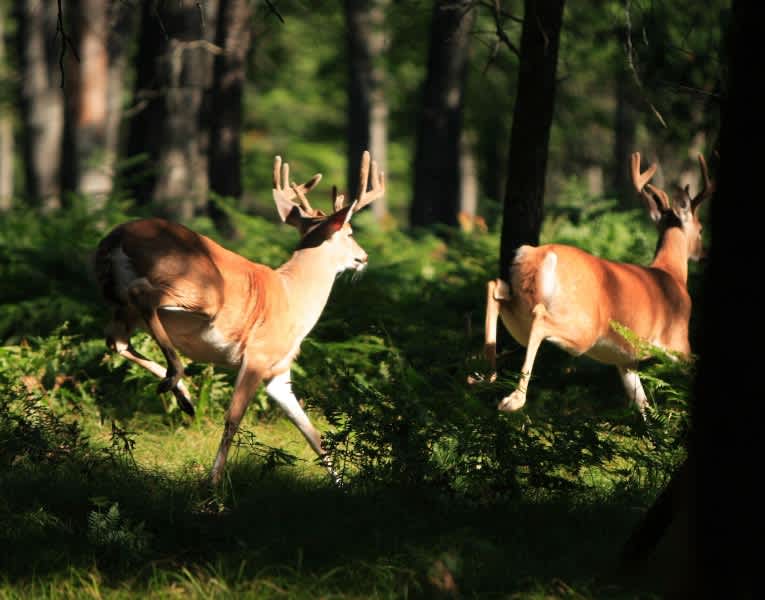Where Are Bucks Hiding? New Study Reveals Insights into Buck Behavior
OutdoorHub Reporters 11.19.14

Any hunter knows that as bucks behave differently as deer season drags on. Many inquisitive sportsmen will ask how large a buck’s home range is, how far the animal will travel, whether older bucks are smarter than younger bucks, and whether that 10-pointer they’ve had their eye on all season really is sneaking into their food plot every night. A recently completed study by researchers at Auburn University, the South Carolina Department of Natural Resources (DNR), and Brosnan Forest may shed some light on how bucks behave during hunting season.
The study, conducted by Auburn University graduate student Clint McCoy, involved capturing and collaring 40 male whitetail deer in Dorchester County’s Brosnan Forest. The captured bucks were separated into four age groups, with approximately 10 in each class from 1.5 years to 4.5 years old. These animals were equipped with GPS units that recorded their location approximately every half hour, and after three years of running the study, researchers were able to draw up a comprehensive map of where the collared bucks came and went inside the forest.
As it turned out, the average range of the bucks involved in the study was just 350 acres. Researchers said this number should not be indicative of the species overall, but rather is caused by the high quaility of habitat within Brosnan Forest.
“Also, as you would expect, buck movements increased from an average of about 2.5 miles a day during the pre-rut to about 3.5 miles per day during the rut,” McCoy said in a press release. “So even with relatively small home ranges bucks still moved considerable distances on a daily basis related to breeding.”
Surprisingly, the study found nothing to prove that older bucks were “smarter” with their movement compared to younger males. Despite having more experience, older deer had about the same home ranges and exhibited the same behavior as their younger counterparts.
“To [test] this we created ‘harvest zones’ around each deer stand on the property with a buffer representing the area around each stand in which a hunter could see and harvest a deer,” McCoy explained. “Using daytime GPS locations (since hunting does not take place at night), we found that all bucks, regardless of age, responded negatively to increased hunting pressure. By late November the chances of a buck entering the harvest zone during daylight hours were only a quarter of what they were when the season started.”
Bucks are also smart enough to take advantage of nighttime.
“On the other hand,” continued McCoy, “bucks of all ages actually increased their use of food plots as the season progressed, however, this increase in use was at night. Finally, we looked at the question of how long after a stand is hunted do bucks continue to show avoidance for the area. Based on the data it appears that buck avoidance of a stand lasts about 3 days following hunting. However, even after 5 days they were not as likely to visit the site as they were before the stand was ever hunted. The bottom line is that the more a stand is hunted the less likely bucks are to pass through the area during daytime. For hunters it is best to be unpredictable when choosing your hunting locations.” said McCoy.
It may also be wise to stake out bedding areas and well-traveled hotspots. Bucks are actually fairly clumped together during the daytime, while at night they spread out to visit food plots and agricultural fields.
What kind of patterns have you noticed during deer season?

